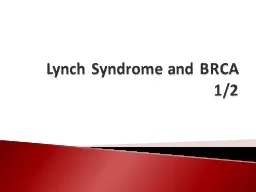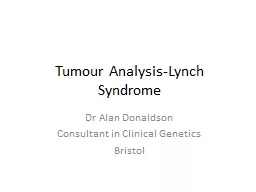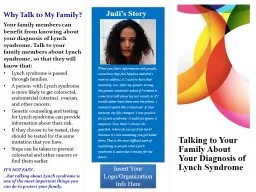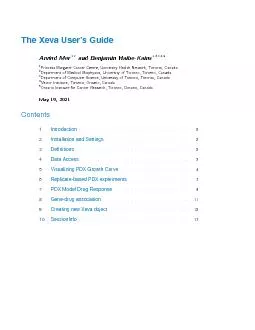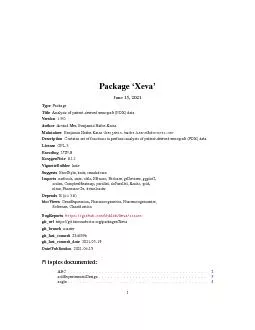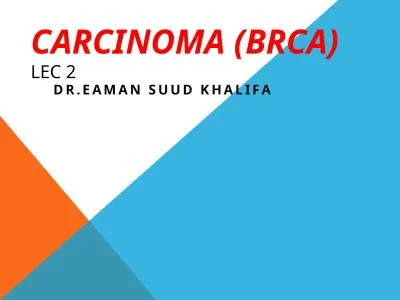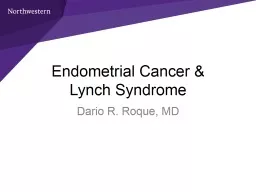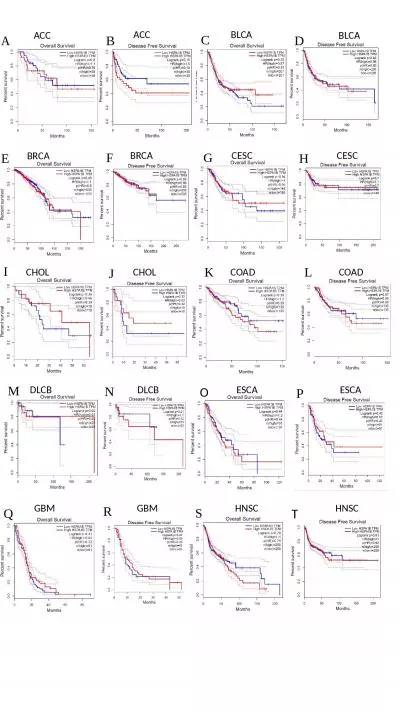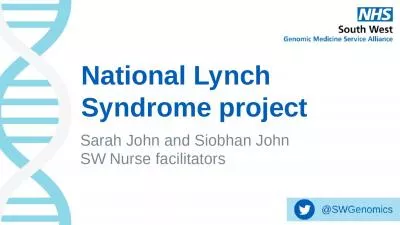PPT-Lynch Syndrome and BRCA 1/2
Author : yoshiko-marsland | Published Date : 2016-05-26
21 yo female px to GP with 352 of severe abdominal pain colicky in nature with no relieving sx Associated with nausea and reduced appetite 2 p resentation to ED
Presentation Embed Code
Download Presentation
Download Presentation The PPT/PDF document "Lynch Syndrome and BRCA 1/2" is the property of its rightful owner. Permission is granted to download and print the materials on this website for personal, non-commercial use only, and to display it on your personal computer provided you do not modify the materials and that you retain all copyright notices contained in the materials. By downloading content from our website, you accept the terms of this agreement.
Lynch Syndrome and BRCA 1/2: Transcript
Download Rules Of Document
"Lynch Syndrome and BRCA 1/2"The content belongs to its owner. You may download and print it for personal use, without modification, and keep all copyright notices. By downloading, you agree to these terms.
Related Documents

